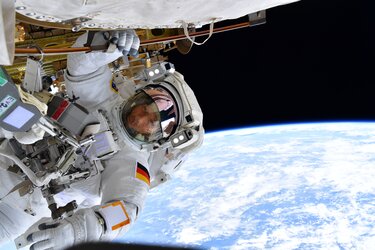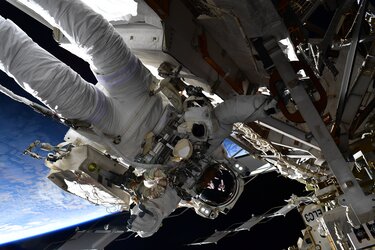Accept all cookies Accept only essential cookies See our Cookie Notice

About ESA
The European Space Agency (ESA) is Europe’s gateway to space. Its mission is to shape the development of Europe’s space capability and ensure that investment in space continues to deliver benefits to the citizens of Europe and the world.
Highlights
ESA - United space in Europe
This is ESA ESA facts Member States & Cooperating States Funding Director General Top management For Member State Delegations European vision European Space Policy ESA & EU Space Councils Responsibility & Sustainability Annual Report Calendar of meetings Corporate newsEstablishments & sites
ESA Headquarters ESA ESTEC ESA ESOC ESA ESRIN ESA EAC ESA ESAC Europe's Spaceport ESA ESEC ESA ECSAT Brussels Office Washington OfficeWorking with ESA
Business with ESA ESA Commercialisation Gateway Law at ESA Careers Cyber resilience at ESA IT at ESA Newsroom Partnerships Merchandising Licence Education Open Space Innovation Platform Integrity and Reporting Administrative Tribunal Health and SafetyMore about ESA
History ESA Historical Archives Exhibitions Publications Art & Culture ESA Merchandise Kids Diversity ESA Brand Centre ESA ChampionsLatest
Space in Member States
Find out more about space activities in our 23 Member States, and understand how ESA works together with their national agencies, institutions and organisations.
Science & Exploration
Exploring our Solar System and unlocking the secrets of the Universe
Go to topicAstronauts
Missions
Juice Euclid Webb Solar Orbiter BepiColombo Gaia ExoMars Cheops Exoplanet missions More missionsActivities
International Space Station Orion service module Gateway Concordia Caves & Pangaea BenefitsLatest
Space Safety
Protecting life and infrastructure on Earth and in orbit
Go to topicAsteroids
Asteroids and Planetary Defence Asteroid danger explained Flyeye telescope: asteroid detection Hera mission: asteroid deflection Near-Earth Object Coordination CentreSpace junk
About space debris Space debris by the numbers Space Environment Report In space refuelling, refurbishing and removingSafety from space
Clean Space ecodesign Zero Debris Technologies Space for Earth Supporting Sustainable DevelopmentLatest
Applications
Using space to benefit citizens and meet future challenges on Earth
Go to topicObserving the Earth
Observing the Earth Future EO Copernicus Meteorology Space for our climate Satellite missionsCommercialisation
ESA Commercialisation Gateway Open Space Innovation Platform Business Incubation ESA Space SolutionsLatest
Enabling & Support
Making space accessible and developing the technologies for the future
Go to topicBuilding missions
Space Engineering and Technology Test centre Laboratories Concurrent Design Facility Preparing for the future Shaping the Future Discovery and Preparation Advanced Concepts TeamSpace transportation
Space Transportation Ariane Vega Space Rider Future space transportation Boost! Europe's Spaceport Launches from Europe's Spaceport from 2012Latest

A matter of time
Thank you for liking
You have already liked this page, you can only like it once!
The International Space Station’s largest scientific instrument celebrates a decade in orbit. Wednesday 19 May 2021 marks 10 years since the cosmic-ray-hunting Alpha Magnetic Spectrometer (AMS-02) was installed on the exterior of the Space Station.
AMS-02 is a sub-atomic particle detector that looks for dark matter, antimatter and measures cosmic rays. It took 16 countries and nearly 20 years to make it a reality. It was assembled at CERN, tested at ESA’s ESTEC facility in the Netherlands and installed on the Space Station in 2011.
More than 175 billion cosmic rays later, AMS-02’s scientific results have changed our understanding of the origin of these particles and the way in which they journey through space at almost the speed of light. These include the revelation that primary cosmic rays have at least two distinct classes, one made of light nuclei and another made of heavy nuclei. Primary cosmic rays are produced in supernovae explosions in the Milky Way and beyond, and they can travel for millions of years before reaching AMS.
In this image, ESA astronaut Luca Parmitano is seen conducting the first task in a series of four complex spacewalks carried out to maintain AMS-02’s cooling system during his Beyond mission. After removing this debris shield, Luca handed it to NASA astronaut and fellow spacewalker Andrew Morgan who cast it away to burn up harmlessly in Earth’s atmosphere. The pair, and teams on the ground, then got their first look at the worksite.
Over 20 new tools were designed for the spacewalks carried out by Luca and Andrew. Though the instrument was never designed to be maintained in orbit, their work extended its lifetime to match that of the Station and will ensure it continues to collect cosmic data to shed light on the origin of our Universe for many years to come.
-
CREDIT
ESA/NASA -
LICENCE
ESA Standard Licence

Leading the way

Cargo load

ESA astronaut Matthias Maurer's first spacewalk

A very good start















 Germany
Germany
 Austria
Austria
 Belgium
Belgium
 Denmark
Denmark
 Spain
Spain
 Estonia
Estonia
 Finland
Finland
 France
France
 Greece
Greece
 Hungary
Hungary
 Ireland
Ireland
 Italy
Italy
 Luxembourg
Luxembourg
 Norway
Norway
 The Netherlands
The Netherlands
 Poland
Poland
 Portugal
Portugal
 Czechia
Czechia
 Romania
Romania
 United Kingdom
United Kingdom
 Slovenia
Slovenia
 Sweden
Sweden
 Switzerland
Switzerland
























